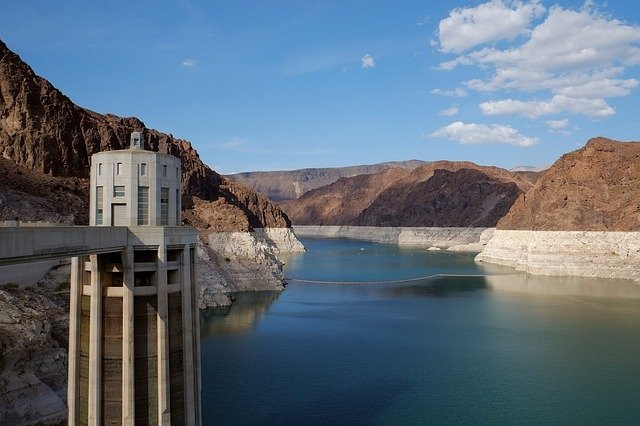
News reports focus on drought's affect on power production at sites like Hoover Dam, but overlook more abundant hydro supplies in places like the Pacific Northwest.
The four power marketing administrations (PMA) in the U.S. that sell electricity generated by federal hydropower projects face a number of climate-related risks to their operations and need to take additional steps to better manage climate, according to a Government Accountability Office report.
The PMAs — the Bonneville Power Administration, Southeastern Power Administration, Southwestern Power Administration, and Western Area Power Administration — sell electricity to public utilities, rural cooperatives, and Indian Tribes in over 30 states. The U.S. Department of Energy’s Office of the Under Secretary for Infrastructure oversees the PMAs.
Climate-related risks to PMAs’ operations include the fact that decreasing water availability as a result of droughts could reduce electricity generated, affecting their ability to provide power. In addition, warmer temperatures and drier conditions could lead to more frequent wildfires, which could disrupt operations. More frequent extreme weather events and other risks associated with climate change could cost utilities and customers billions of dollars from power outages and infrastructure damage. In September 2020, 38 of BPA’s transmission lines were out of service because of wildfires, some for more than a week.
The PMAs have taken some steps to manage climate-related risks. For example, in 2022, BPA and the SWPA conducted assessments to identify weaknesses associated with climate change and developed resilience plans to address them, the GAO report said. This work is called for by DOE’s Vulnerability Assessment and Resilience Planning Guidance. But the other two have not yet done so and the office recommends that they develop such plans.
This report examines the risks climate change poses to PMA operations and steps the PMAs have taken to manage climate-related risks and additional steps needed. GAO analyzed reports, including the Fourth National Climate Assessment and interviewed PMA officials, as well as 18 knowledgeable stakeholders from risk management; consumer, trade association and environmental groups; and staff from five DOE national laboratories.
In the report, GAO made seven recommendations, which DOE agreed with:
For SEPA and WAPA: The administrator should direct staff to develop a climate change vulnerability assessment that identifies critical assets, infrastructure systems and programs vulnerable to climate change.
For SEPA and WAPA: The administrator should direct staff to develop a resilience plan that identifies and prioritizes climate resilience measures needed to address climate-related risks.
For SEPA and WAPA: The administrator should direct staff to establish a plan to routinely reassess its vulnerability assessment and resilience plan to incorporate updated information about climate science and implemented resilience measures.
For DOE: The Secretary of Energy should take steps to determine the need for future assessments of the effects of climate change on federal hydropower and on the marketing of power from federal facilities.
The two PMAs plan to develop plans by Dec. 31, 2023.